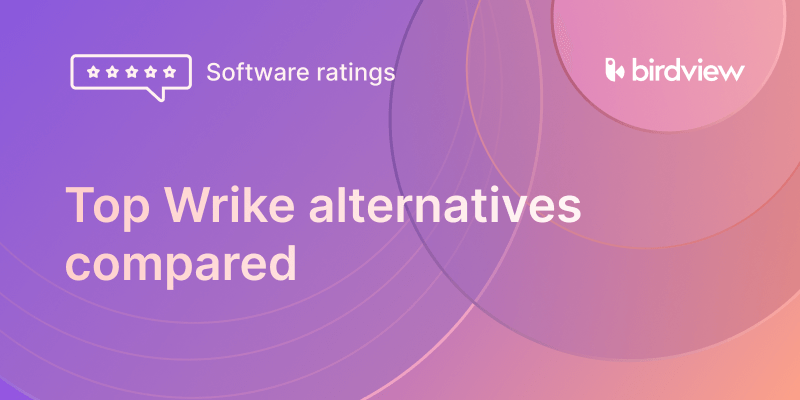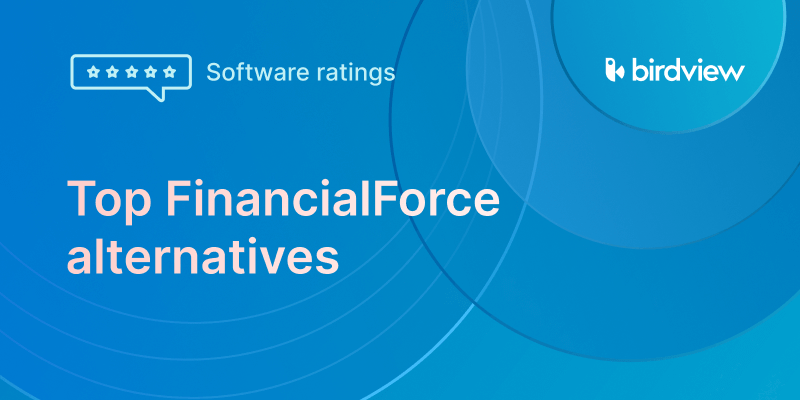Having different types of expertise and people working together can help companies achieve their goals and increase efficiency. This is when cross-functional teams come into play. While cross-functional teams bring many benefits, they might be challenging to build and manage in the first place. In this article, we will explain what a cross-functional team is, how to build and manage such a team, what challenges they bring alone, and how PSA software helps to tackle them effectively.
What is a cross-functional team?
Let‘s start with the basics – a cross-functional team definition. A cross-functional team is a group of team members with various skill sets and expertise typically gathered from different departments working together to achieve common goals.
Cross-functional teams strongly rely on collaboration and communication to ensure their processes are streamlined, and goals are clearly defined. Depending on the type of your organization, cross-functional teams can be temporary or permanent.
Benefits of cross-functional teams
There are several reasons why your organization might need a cross-functional team on board:
- Companies that effectively use cross-functional teams report a 15% increase in on-time project delivery and enhanced customer satisfaction.
- Cross-functional teams bring diverse perspectives to problem-solving, resulting in faster decision-making and more innovative solutions.
- By pooling resources and expertise, cross-functional teams help organizations adapt faster to new market changes and industry challenges.
- Such a team applies a holistic approach to project management, considering multiple business facets (e.g., customer satisfaction perspective or operational efficiency point of view), resulting in scalable and comprehensive solutions.
- Cross-functional teams are especially helpful for larger projects when it’s important to clearly divide responsibilities and key strategic initiatives to finish the project on time and within budget.
- Cross-functional teams reduce bottlenecks and improve efficiency by eliminating departmental silos, allowing projects to move forward smoothly.
Read more:
Cross-functional team examples
Cross-functional teams can take different forms depending on the structure of your organization, the type of project, and the goals to be accomplished. Here are a few examples of cross-functional teams:
Product development teams
A product development team is a great example of a cross-functional team where the product team, marketing experts, and sales department work together to bring new products to market. In this case, the roles and responsibilities are the following:
- The product team includes software developers, QA engineers, product designers, and product managers responsible for product vision, as well as creating and validating a new product for the launch.
- The marketing team may include PPC specialists, copywriters, and digital marketers responsible for creating compelling messaging, building brand awareness, and developing promotional strategies.
- The sales department includes sales representatives and account managers who aim to develop strategies for reaching potential customers, lead qualification, and closing deals.
Customer success team
A customer success team brings together customer support, account management, and technical support to provide customers with a seamless and positive experience. This type of cross-functional team is typical for service delivery organizations. In this case, the roles and responsibilities are the following:
- Customer support is the front line that handles inquiries, resolves product-related issues and ensures a quick response.
- Account managers focus on building long-term relationships with customers. They work primarily to ensure customer satisfaction and encourage retention.
- Technical support teams address complex, product-related issues that require technical expertise.
Challenges of cross-functional teams and how PSA solves them
Challenges are inevitable if you put people from different backgrounds and departments to work together. To ensure your cross-functional team works properly, it‘s important to foresee and prevent these challenges in advance.
Here are some of the most common challenges faced by cross-functional teams, especially the ones operating in the service delivery industry, and how PSA software, such as Birdview PSA, can help tackle them:
Resource conflicts
📍 Challenge: When you have people from different departments working together, managers may struggle with team members overbooking, schedule conflicts, and, as a result, missed deadlines.
💡 Solution: Birdview PSA‘s resource planning and scheduling capabilities allow you to visualize the team‘s capacity and workload across all departments within your organization, resolve scheduling conflicts, and prevent over- and underloading your staff. To form a team, project managers can request resources needed for their projects, while resource managers can approve those requests and allocate resources based on their skills and availability.
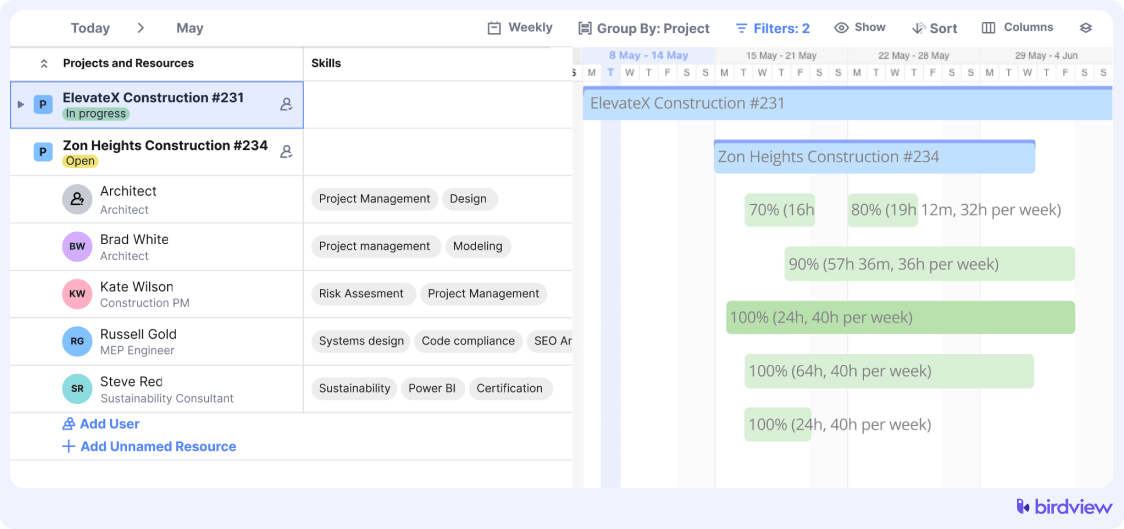
Lack of visibility into projects
📍 Challenge: Each department within the cross-functional team may have its isolated data and reporting, making it impossible for the rest of the team members to stay up-to-date on their common project progress.
💡 Solution: With Birdvirew PSA, you can access Power BI reports and dashboards that generate project insights from various departments into a single visualization of your project’s health and status. This way, everyone stays informed and can make strategic decisions powered by real-time data to ensure project success.
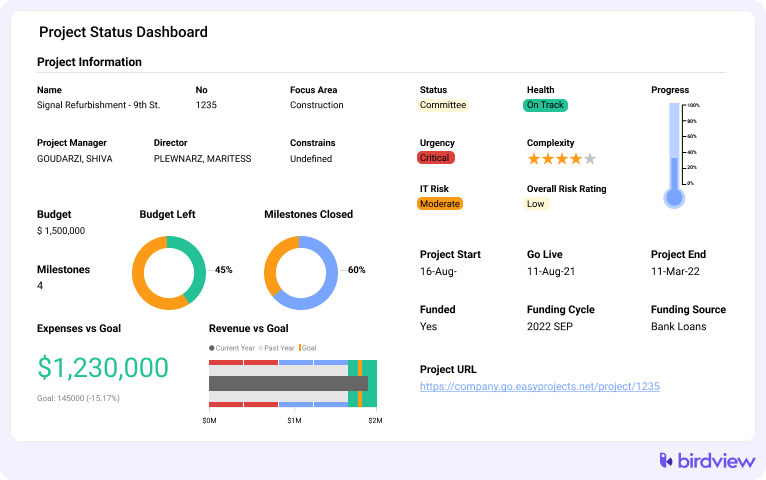
Billing and accounting challenge
📍 Challenge: Cross-functional teams often face challenges in accurately tracking billable hours, invoicing, and managing project-related expenses. With multiple departments involved, billing and accounting complexities can lead to delayed invoices, inaccurate billing, or discrepancies in financial reporting.
💡 Solution: Birdview PSA streamlines billing and accounting by centralizing financial data across teams. Team members can log billable hours and expenses in real time and you can use this data to bill your clients, thus making the entire invoicing process run smoother and faster. Birdview PSA also provides real-time insight into project costs, revenue, and profitability, enabling better financial transparency.
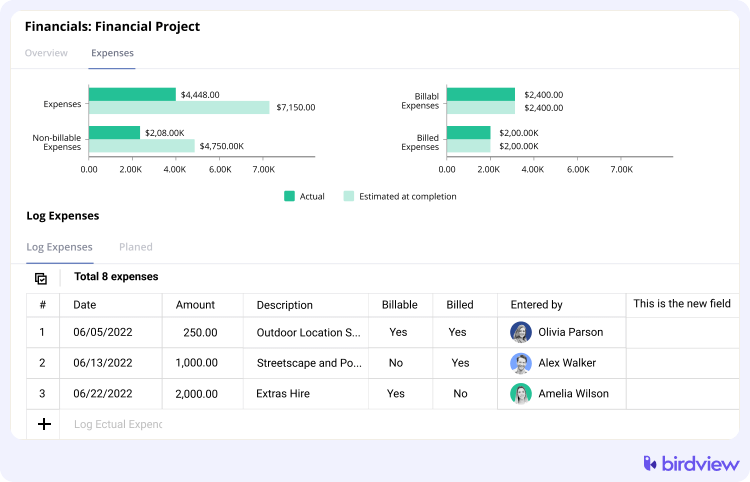
Compex cross-project dependencies
📍 Challenge: Cross-functional teams, especially the ones involved in service delivery, often manage interdependent tasks not only within a single project but also across multiple concurrent projects. Coordinating these dependencies is challenging, especially when certain tasks or deliverables in one project impact timelines or outcomes in another.
💡 Solution: Birdview PSA software offers advanced dependency management, allowing teams to visualize and track both intra-project and cross-project dependencies. This visibility ensures that teams can identify how tasks or milestones in one project influence others. It helps to prevent bottlenecks and maintain project flow across complex, multi-project environments.
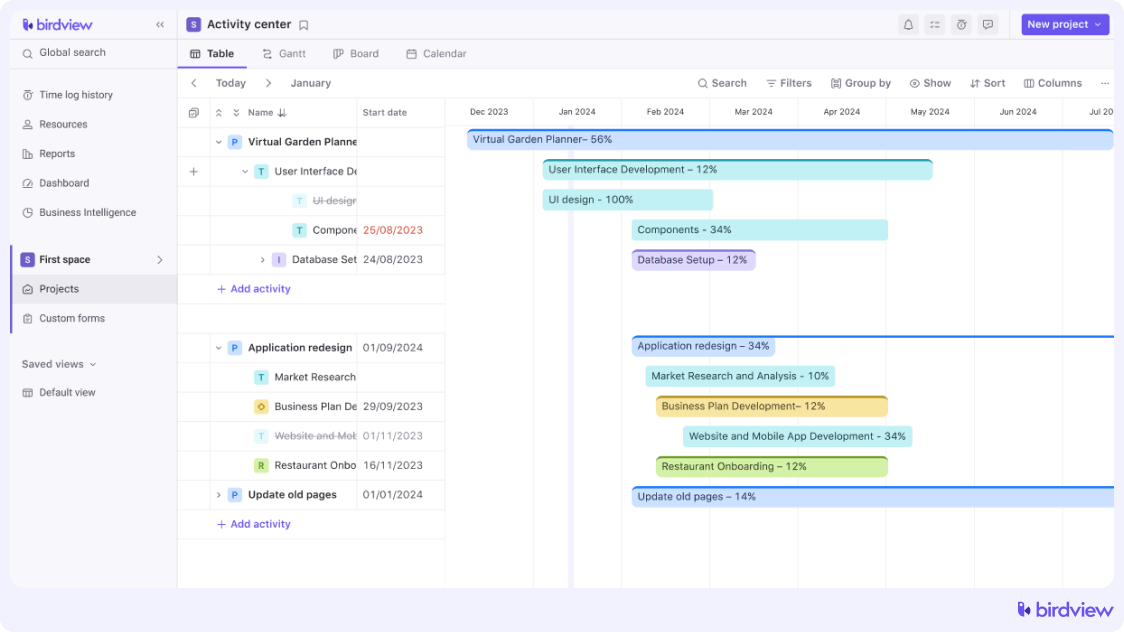
Communication barriers and misalignment
📍 Challenge: Approximately 75% of cross-functional teams fail to meet core goals, such as staying on budget, meeting deadlines, and achieving project specifications, primarily due to communication breakdowns and coordination challenges.
💡 Solution: With PSA software, team members get access to real-time notifications and built-in communication channels such as message boards, ensuring that everyone remains aligned.
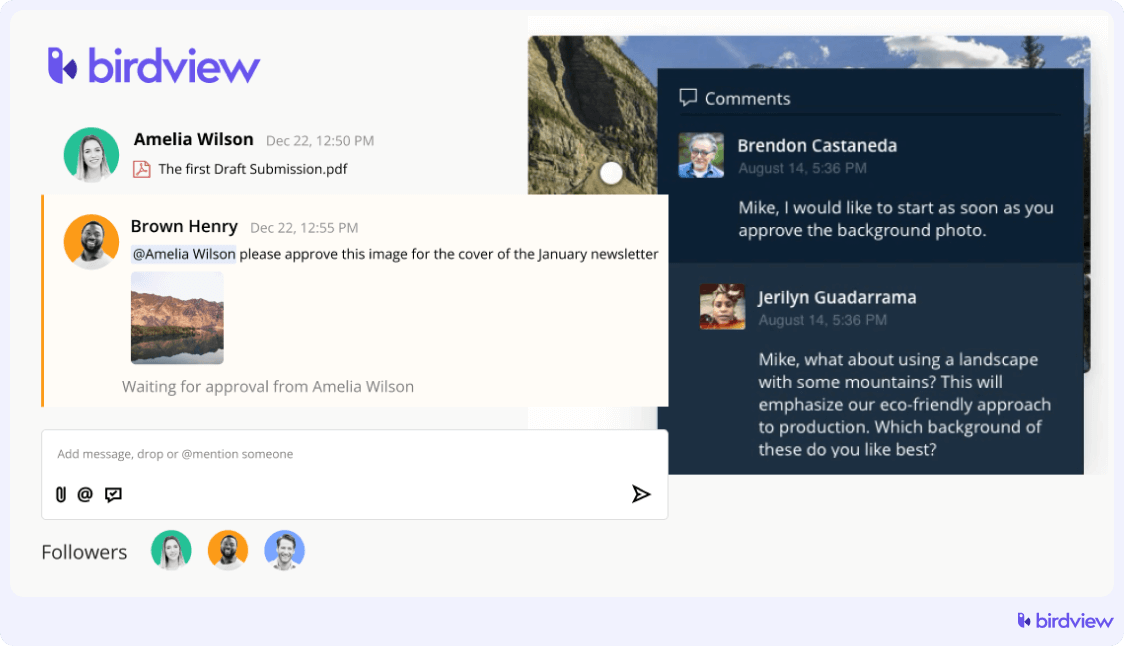
Data silo challenge
📍 Challenge: Around 80% of employees report that their companies struggle with data silos, where information remains isolated within different departments, making it harder for team members to access up-to-date, shared data.
💡 Solution: Birdview PSA acts as a central hub for project communication, allowing all team members to access shared project updates, files, and task boards in one place. It also integrates with document management systems such as OneDrive and Sharepoint, making it possible to store, manage, and access data from multiple sources within a single platform.
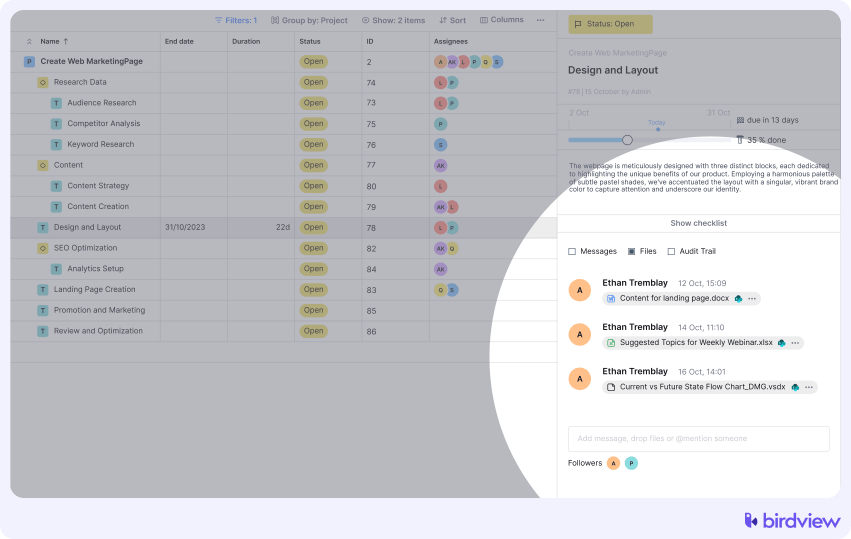
How to build a cross-functional team: 5 steps
There is nothing complicated about building and managing a cross-functional team if you ask the right questions from the start. To build a strong and result-driven cross-functional team, temporary or permanent, answer the following questions:
What are our goals?
Setting clear goals is the first step on the way to creating a cross-functional team. Without clearly defined targets, you may end up with a team full of people that you don‘t even need or, even worse, lack the specialists critical for our project‘s success.
What skills do we need?
Once you set your goals, it‘s time to think about what skills your team members require to complete the project. In Birdview PSA, you can identify skills for each team member or role in your organization to make it easier to find the right people for the job.
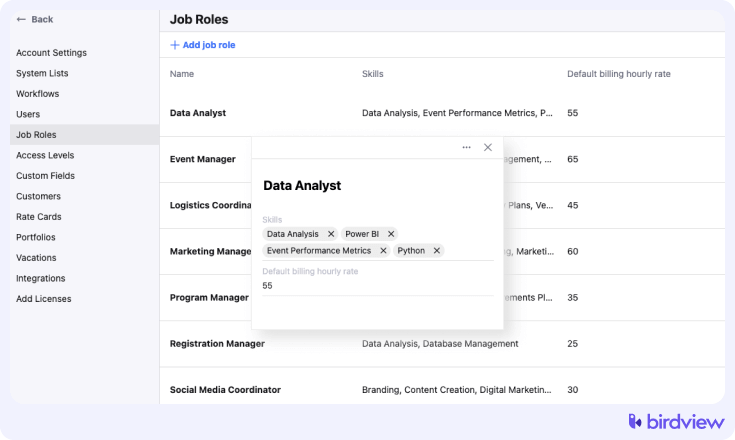
How diversified is our team?
When forming a team, make sure you include people with various skills and backgrounds and subject matter experts. This will help you build a stronger expertise within the team and achieve desired outcomes more precisely.
What are their roles and responsibilities?
Now that you have a team with the required skills and knowledge, it’s time to assign them to their actual tasks. You can even use Birdview’s AI-powered ‘Find candidates’ feature to help you match the tasks of your team members.
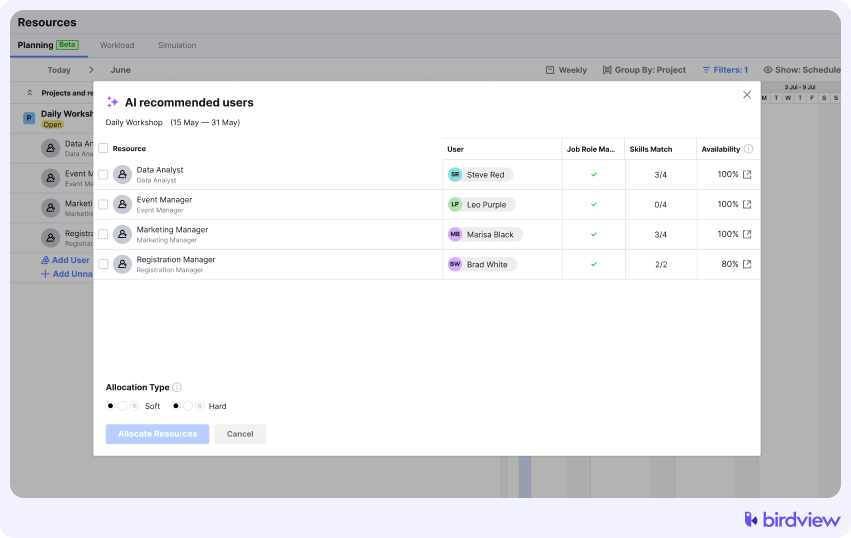
Can we automate our work?
Too many people managing to finish too many tasks at the same time can lead to chaos, human errors, and missed deadlines. Use work automation to your advantage. Automate routine and repetitive tasks, speed up approval processes and reporting, make as much project information as possible accessible to all team members, and much more. Birdview PSA provides a centralized platform where cross-functional teams can organize and manage their tasks, establish strong collaboration, and share results. It makes the team‘s life easier for their own benefit and the benefit of the overall project’s success.
Archive common goals with Birdview PSA
With cross-functional teams, your organization bets and relies on its strongest asset – people. With Birdview PSA‘s help, managing a cross-functional service delivery team becomes a breeze. You have everything you need in one place: your resources, projects, and finances.
To see how Birdview PSA can help your organization simplify its cross-functional team management, sign up for Birdview PSA‘s free trial or schedule a demo today to see how it can streamline your project management.


